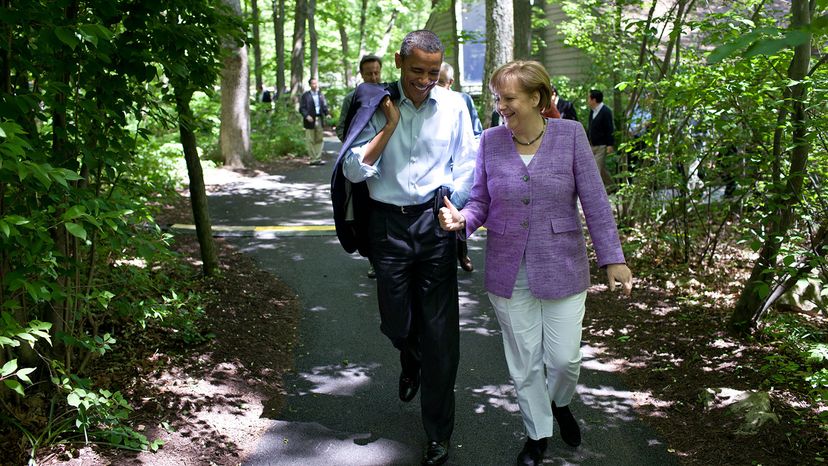Presidential Perks

Running the free world is a full-time job for any U.S. president, and it requires he or she is able to travel from one corner of the world to another in as fast as possible. Enter Air Force One. While President Harry Truman ordered the creation of a pilot pool for presidential air transport, it was during the Kennedy administration that the presidency entered the jet age. President John Kennedy ordered a Boeing 707 converted into a "flying White House" [source: CNN]. The call sign for the plane is the famous Air Force One, although this is the designation anytime the president is aboard a plane, not the designation of the specific plane.
Aboard Air Force One, which today is a pair of customized Boeing 747s, the president has at his or her disposal a fully equipped traveling office that can accommodate the president's staff and family, as well as the press corps that travels with the president to cover visits for news outlets. Two galleys aboard can serve meals for up to 100 people, there are staterooms for the president and first lady and the presidential seal can be found almost everywhere aboard the plane — including on boxes of specially made M&M candies.
Advertisement
In addition to the Air Force One, the president is escorted during plane travel by two C-5 Galaxy planes that transport his or her presidential limos, a special ambulance and Secret Service agents. He or she can also get around by air via Marine One, the presidential helicopter.
Every president since Franklin Roosevelt has had the keys to the presidential mountain retreat, Camp David. This 128-acre estate is tucked in the mountains of Maryland and has been the site of several historic presidential events, like the Camp David Peace Accord between Egypt and Israel, brokered by President Jimmy Carter.
The White House itself is equipped for presidential downtime as well. President Harry Truman had a bowling alley installed, which was later updated and frequently used by President Richard Nixon. He and first lady Pat Nixon were avid bowlers. There's also a tennis court, a swimming pool, a jogging track and a movie theater on the grounds. The president also has 24-hour chef service available; the White House employs five full-time chefs. Presidents also add their own personal touches at times. President Lyndon Johnson, for example, had a soda fountain installed in the presidential residence that delivered Fresca. The White House also boasts its own floral department, which handles the extensive flower arrangements throughout the building.
Incumbent presidents seeking re-election have an inherent perk that comes with the job: an army of appointed officials who can campaign throughout the country using taxpayer money. This is an unspoken presidential perk, although candidates from the opposition party tend to cry foul when presidents use their power during campaigns. While it may be unfair, the presidential power to campaign while in office isn't illegal, so long as official state business is being carried out. For example, in 2004, incumbent President George W. Bush sent Cabinet members and senior staff to swing states around the country. These surrogates carried with them checks (Labor Secretary Elaine Chao presented a $10 million check to a faith-based program in Florida, for example) and praise for the campaigning president's work — and future agendas. In 2020, many objected when President Donald Trump broke longstanding tradition and accepted the GOP nomination at the White House instead of a neutral convention site, due to the coronavirus pandemic [source: Cathey, et al].
So what happens after the president's job is finished?